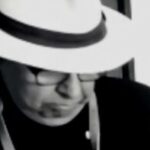Melodica reeds – harmonica or accordion style?
- This topic has 25 replies, 8 voices, and was last updated 8 years ago by
 Melodica-Me.
Melodica-Me.
-
AuthorPosts
-
March 30, 2015 at 6:08 am #4542
 OfirParticipant
OfirParticipantAlan, I’m answering your post here as I believe that it’s more suitable for this discussion.
(Original: https://melodicaworld.com/forums/topic/hohner-melodica-classic-versus-new/page/6/#post-4541 )Thank you Alan. In order to keep my (beautiful) marriage alive, I rather not adopt any lost Melodica I find, even if it is the Piano 36.. 🙂
I’m seeking for the best that I can find, yet owning as few as I can to suit my needs – taking into account that the Pro36 can be resold pretty easily if I won’t like it (as an accordion lover I quite doubt it, but I can never know before trying..)But it raises an interesting question –
Daren, while referring to the (possibly best of the) harmonica reeds, do you prefer your Yamaha over the Piano as well? and if so, how can you describe the differences?
One down side that I found for the Yamaha is that its color heavily depends on how hard you blow, meaning that wishing to get stronger notes (yet far from shouting), one must compromise on a flatter tone (less accordion overtones). It may relate to the low gapping I chose, or it is an inherent property of the reeds (you probably know better).March 30, 2015 at 7:15 pm #4545 DarenKeymaster
DarenKeymaster@Ofir, I haven’t made a direct comparison over the Hohner piano 36 and the Yamaha P37D. It was years ago when I owned a Hohner piano.
In answer to your other question, I haven’t found that I get a flatter tone when playing loudly. I just tried playing now, to see if I can hear anything, and I can’t!
March 31, 2015 at 6:43 pm #4554 LowboyParticipant
LowboyParticipantThe P37D is a brand new Honda Accord. The Hohner Piano 36 is a 1966 Cadillac with about 120,000 miles on it. Lowboy
March 31, 2015 at 6:50 pm #4555 OfirParticipant
OfirParticipantLowboy – mmm… too vague. I’m sure that a more reasoned comparison can be made, by a owner of both.
Daren, I’ll do my best to record the different tones I’m talking about very soon.
March 31, 2015 at 7:09 pm #4556 LowboyParticipant
LowboyParticipantHi Ofir,
I was being funny. But, the comparison is valid if you are familiar with the instruments and the cars.
I own three Hohner Piano 36s and one P32D and two P25Fs. I gave one my other P32Ds away. The P32D and P37D are identical except for the extra keys.
Somewhere months ago I did a comparison. Can’t find it now.
The Yamaha P37D is a new Honda Accord: Precise design. Precision manufactured. Modern materials. Ultra responsive. Light. Controlled sound. You know that because you own one.
The Hohner Piano 36 is a 1966 Cadillac with 120,000 miles on it: Pre-CAD design with looser tolerances. Manufacture with minimal automation (ever one was different). 1960s materials. Sloppy keys, slower response to playing. Heavy. Wild, bright, loud sound with tons of harmonics.
Regards,
Lowboy
March 31, 2015 at 8:03 pm #4557 LowboyParticipant
LowboyParticipantI also did a comparison recording, dry with a high quality mic, of the Yamaha P32D and Hohner Piano 36 some months ago and published it on this website. I can’t seem to find it now. However, here is a comparison recording, with effects, of the Yamaha P32D, Hohner Piano 36, and two other melodicas. You don’t really hear the the wide sound variation between the melodicas because I was trying to see how they responded to effects and my EQ settings.
The link for the recording is below. Notes on the recording:
“For comparison, here is the sound of four melodicas I played to a jazzy blues backing track using a clean sound for the most part. I am using a Shure Green Bullet mic and going through a premium MXR bass compressor pedal, a Lone Wolf Blues Company (LWBC) Harp Delay pedal, and a LWBC Harp Break Pedal to enhance the bass (not using the distortion feature of the pedal). This setup minimizes the difference between the sounds of the melodicas. The delay removes a lot of high harmonics, making the melodica sound more like a harp and rounding out the sound.
Times are approximate:
0 to 1:05 = Suzuki A-34C
1:05 to 2:05 = Yamaha P-32D
2:05 to 3:05 = Hohner Piano 36
3:30 to 5:35 = Hohner Piano 27 (HM27)Backing track was hosted by: http://www.guitarbackingtrack.com. Nice work by the musicians and the website for posting it with permission to use it in non-commercial settings.”
Regards,
Lowboy
March 31, 2015 at 8:04 pm #4558 LowboyParticipant
LowboyParticipantI guess I still don’t have the linking thing down yet. Here is another try.
This recording accompanies my previous post.
Lowboy
https://soundcloud.com/lowboy-bootay/compare-four-keyboard-harmonicas-with-blues-backing-trackwav
March 31, 2015 at 8:15 pm #4560 Alan BrintonParticipant
Alan BrintonParticipantMy collection of Pianos 36 and Yamahas is competitive with Lowboy’s (!). I play the Yamaha 25 and 32 all the time all the time. Yesterday I decided to figure out which Piano 36 is best (in terms of playing condition), and I then compared alternated between it and the Yamaha P-32D and P-37D. The Piano 36 has richer tones, especially at the low end, but it takes a whole lot more air than any of the Yamahas, including the P-37D. And I was comparing the most air tight Piano 36. How much it has to do with age, I’m not sure, but the Piano 36 is more leaky than any Yamaha I have — and that actually includes a 1961 Yamaha Pianica 32 and other 1960s, 70s and 80s Yamahas. I think the Piano 36 is inherently more leaky, or at least more prone to leakiness as it ages. The Yamahas are more tightly constructed and have been so since the beginning. The parts fit together more snugly. At least that’s my opinion from taking a lot of them and several of the Piano 36 apart. It’s much harder for me to play a Piano 36 because I have to focus too much attention on my breathing.
April 13, 2015 at 11:38 am #4648 OfirParticipant
OfirParticipantThanks Lowboy! I had some busy weeks and remembered that I didn’t comment back.
Anyway, I find it hard to get the picture using these videos.
And I do appreciate the cars analogy 🙂April 20, 2015 at 9:36 am #4752 OfirParticipant
OfirParticipantDaren, I owe you a comparison for my claim of the Yamaha P37D being flat on loud playing.
Therefore I performed a test where I played roughly the same melody on 3 different octaves.I recorded all three octaves on a row playing a somehow similar level, using a gain which matches the level of playing.
Then I interleaved them together so you can hear the line played softly and then loud, each time on a different octave. I also normalized each line so they sound roughly the same level, so you can get most of the sound difference without the misleading effect of different volumes.https://soundcloud.com/ofirshw/yamaha-p37d-3-octaves-playing-soft-and-then-loud-normalized
March 31, 2016 at 10:12 pm #6978 Melodica-MeParticipant
Melodica-MeParticipantStephen, here is a post regarding reeds that discuss both single and multi reed plates we had last year.
Thank you
Melodica-Me -
AuthorPosts
- You must be logged in to reply to this topic.
